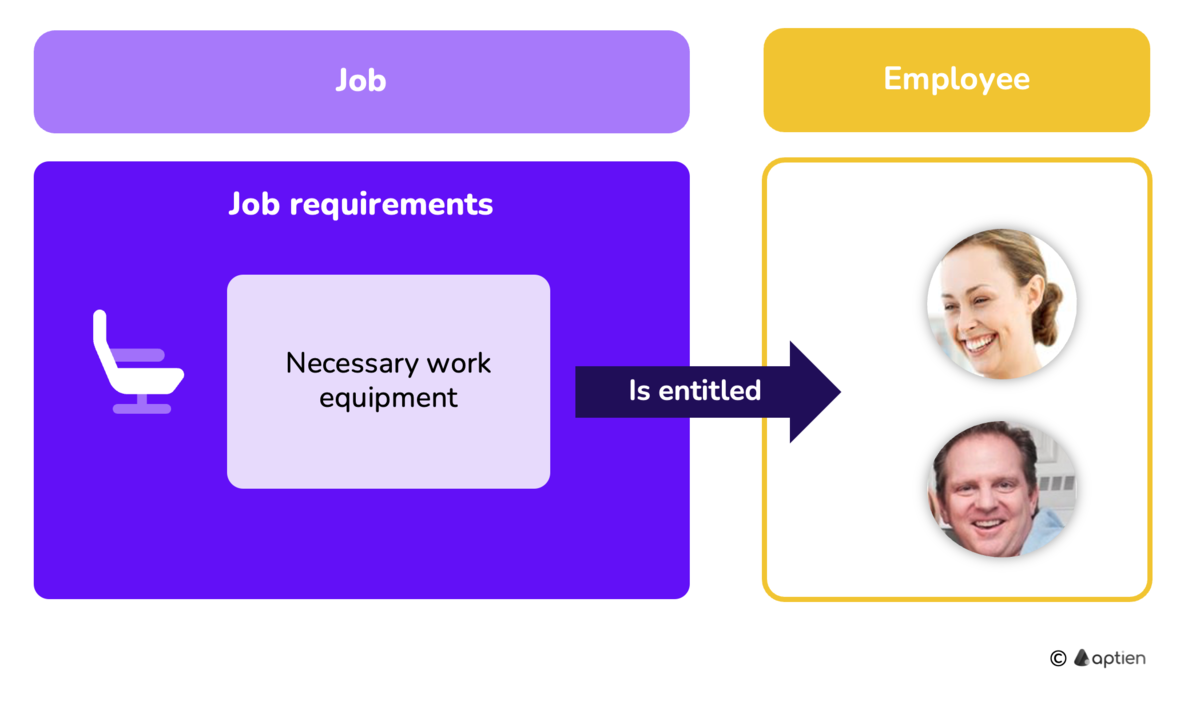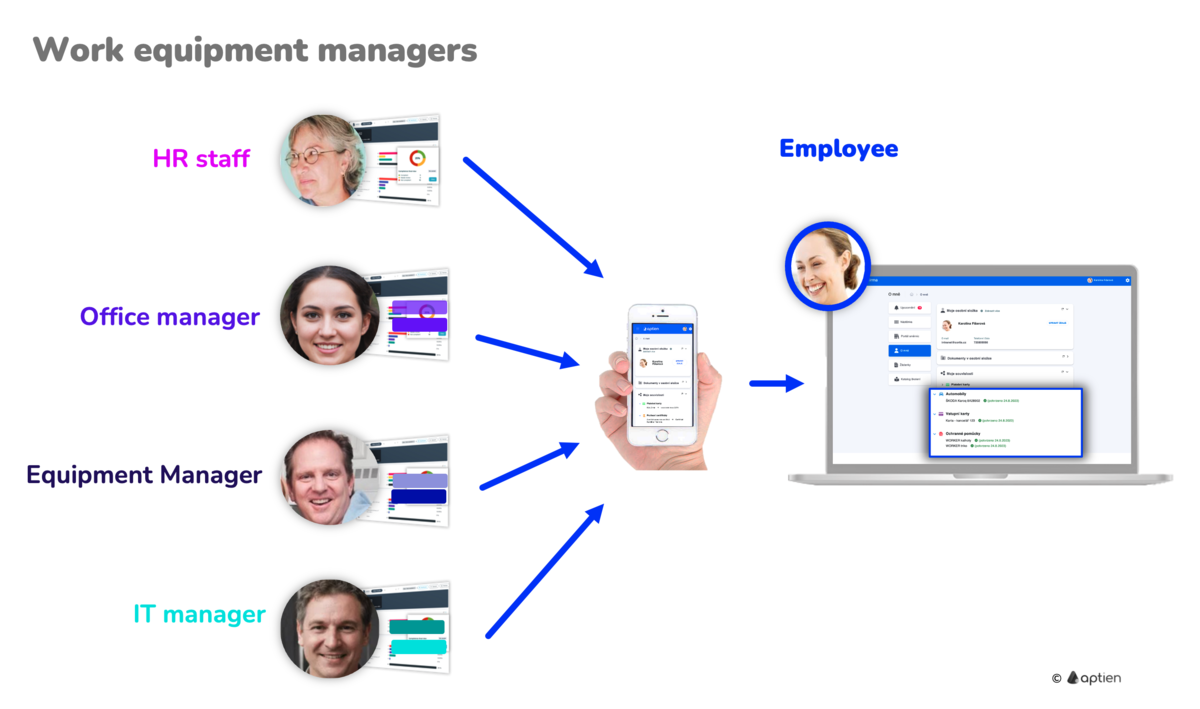Work equipment includes any machine, tool, device, apparatus, workstation, personal protective equipment (PPE), or other equipment necessary for performing a specific job at a specific positions. The purpose of work equipment is to enable efficient job performance and prevent injuries or health damage.
- Work equipment is as important for job performance as skills.
- Companies must keep track of the necessary work equipment for each job position or employee.
- Assigning work equipment is an important part of the employee onboarding process.
- Returning work equipment is an important part of the employee offboarding process.
- Work equipment is part of the employee's work environment.
What are the most common types of work equipment
- Keys and Entrance cards or badges
- Phones and Computers
- Protective work equipment PPE
- Tools
- Software licenses
- Office equipment
- Payment cards
Different Work Equipment if Different Jobs, from Machines up to Software
- Work equipment is a very broad term
- Each job requires different work equipment
Work equipment refers to any machinery, appliance, apparatus, tool, or installation used at work. This includes everything from hand tools to complex machinery and personal protective equipment (PPE). Here are some examples of common work equipment categorized by job type:
Office Jobs
- Accountant: Computer, accounting software, printer, telephone, stationery.
- Work equipment of an accountant: computer, stationery, telephone, printer, accounting software, e-mail,
- Administrative Assistant: Computer, telephone, printer, scanner, filing cabinets, office supplies.
Construction Jobs
- Construction Worker: Hard hat, safety boots, high-visibility vest, hammer, drill, ladder, excavator
- Electrician: Insulated tools, multimeter, wire strippers, conduit bender, safety gloves
Healthcare Jobs
- Nurse: Stethoscope, blood pressure monitor, thermometer, medical gloves, syringes
- Surgeon: Surgical instruments, operating table, anesthesia machine, surgical lights, PPE
Manufacturing Jobs
- Factory Worker: tools, workwear, safety goggles, gloves, ear protection, other PPEs
- Quality Control Inspector: Measuring devices, inspection tools,
IT Jobs
- Software Developer: Computer, development software, testing tools, dual monitors, ergonomic chair
- Network Administrator: Servers, routers, switches, network cables, diagnostic tools.
Work Equipment Provision and Use
To ensure the safe and effective use of work equipment, organizations must:
- Provide appropriate equipment: Supply employees with the necessary tools, machinery, and PPE to perform their job duties.
- Mandate training: Require employees to undergo comprehensive training on the proper use, operation, and maintenance of all work equipment before allowing them to use it.
- Implement refresher training: Conduct regular refresher training sessions to reinforce safety procedures, update employees on new equipment or regulations, and address any identified knowledge gaps.
- Maintain equipment records: Track the issuance, return, and maintenance of work equipment to ensure accountability and prevent unauthorized use.
- Conduct regular equipment inspections: Inspect work equipment periodically to identify and address any damage, wear, or safety hazards.
- Enforce safety policies: Strictly enforce safety policies and procedures related to the use of work equipment, including the proper use of PPE and emergency procedures.
Efficient Work Equipment Management with Aptien
- Aptien simplifies the process of issuing and managing work equipment within your organization.
- Whatever you have in your records, you can assign to the employee
- Centralized Inventory: Store detailed records of all work equipment, tailored to your company's specific needs.
- Streamlined Issuance: Empower equipment managers to easily issue equipment to employees. And employees to confirm
- Efficient Delivery: Manage the delivery and distribution of work equipment to employees.
- Proactive Planning: Plan for future equipment needs and proactively manage purchases.

